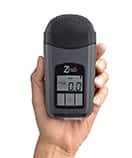
The 26th annual meeting of the National Association for Medical Direction of Respiratory Care (NAMDRC) will be held March 20–22, 2003, at the Ritz Carlton in Phoenix. Titled “Advances in Pulmonary Medicine 2003: A Unique Review of Clinical, Regulatory and Financial Perspectives,” the meeting will cover the insurance industry’s perspective on pulmonary and critical care medicine, practice management issues, reimbursement and coding, legislative and regulatory issues affecting pulmonary medicine, and the latest research and demographics of respiratory diseases. As a joint sponsor, the University of Nebraska Medical Center will designate a maximum of 11.50 credit hours for the educational activity. To register, visit www.namdrc.org or call (301) 718-2975.
For the fifth consecutive year, approximately half of the adult drivers polled by the National Sleep Foundation (NSF) admitted to driving while drowsy or sleepy, and 1% of the respondents said this resulted in an accident. The Sleep in America poll, released November 20, 2002, at the National Summit to Prevent Drowsy Driving in Washington, DC, reflected the responses of 1,010 adults at least 18 years of age surveyed by telephone between October 1, 2001, and December 10, 2001. “We are definitely on a collision course in this country,” says Richard L. Gelula, NSF executive director. “More and more drivers are on the road, and millions of them get behind the wheel feeling sleepy, apparently without considering the inherent dangers they pose to themselves and others. This is a wake-up call to everyone who drives a motor vehicle or rides in a car, truck, or bus: driving while feeling drowsy or fatigued is a lethal combination and is no less an impairment than driving while drunk.” Males and young adults between 18 and 29 were at the highest risk for drowsy driving and falling asleep at the wheel, according to the NSF poll; in fact, more than 71% of the young adults polled reported driving while drowsy in the past year. Adults with children in the household were more likely to drive drowsy than those without children. Adults 65 and older were the least likely to drive drowsy or to fall asleep at the wheel. The poll also found a connection between the quantity and quality of sleep and the probability of becoming drowsy while driving. One quarter of those who rated their sleep as fair/poor were much more likely to drive drowsy than those who said their sleep was good or excellent. Respondents who reported sleeping less than the minimum they needed to be fully alert the next day were more likely to doze off at the wheel than those who slept enough or more than necessary to be fully alert. “One of the most alarming findings in the 2002 Sleep in America poll is that so many people stay on the roads without stopping in spite of feeling sleepy or even dozing off at the wheel,” Gelula says. More than half of the drowsy drivers polled admitted they did not stop driving because of their sleepiness. www.sleepfoundation.org. |
Researchers Find REM Disorder Link to Parkinson’s Disease
New research indicates that a particular type of parasomnia may signal the onset of Parkinson’s disease. Of 26 otherwise healthy patients diagnosed with REM behavior disorder in the 1980s, 17 went on to develop Parkinson’s disease, according to research conducted by Carlos H. Schenck, MD, a psychiatrist and senior scientist at the Minnesota Regional Sleep Disorders Center in Minneapolis, and Mark W. Mahowald, MD, a neurologist and the director of the clinic. Their findings will be presented at the annual meeting of the Associated Professional Sleep Societies in June. www.apss.org.
| FDA Recognizes Intraoral Appliances as Medical Devices Thanks to a recent US Food and Drug Administration (FDA) regulation, sleep specialists may see a surge in the use of intraoral appliances to treat certain sleep disorders. On December 12, the FDA changed the classification of intraoral devices for the treatment of snoring and obstructive sleep apnea to Class II (special controls). Formerly, these appliances were unclassified as medical devices. Class II refers to medical devices requiring special controls to ensure public health and safety. For intraoral devices, considerations include intraoral soreness, temporomandibular disorder, obstruction According to Susan Runner, DDS, of the Center for Devices and Radiological Health, the regulation will help increase the legitimacy of oral appliance therapy for the treatment of sleep-disordered breathing. This may also add to the recognition of oral appliances by insurance providers, thus increasing the possibility for reimbursement to practitioners performing these procedures. “With the support of a large and influential agency, such as the FDA, oral appliance therapy may be recognized as valid treatment by the entire medical and dental communities,” says Harold A. Smith, DDS, president of the Academy of Dental Sleep Medicine. Adherence to the FDA guidance document could also help reduce the number of unmitigated devices. In the future, oral appliances made to treat snoring and sleep apnea must comply with the standards of the guidance document for this ruling. “The FDA classification of oral devices is a forward step in the future of oral appliance therapy, but more important, will ensure the effective treatment and overall health of patients,” Smith says. www.dentalsleepmed.org. |

 of oral breathing, loosening or flaring of lower teeth, and general tooth movement.
of oral breathing, loosening or flaring of lower teeth, and general tooth movement.
